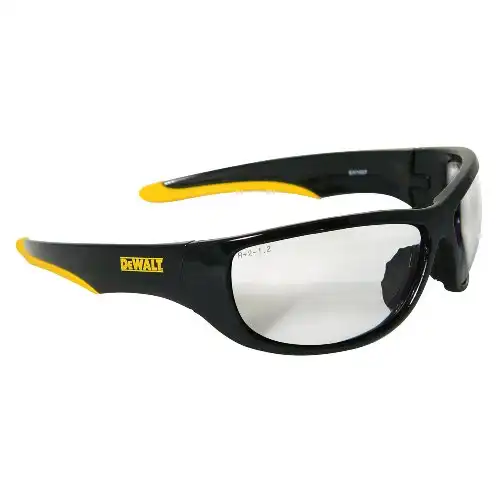How To Break Smaller Rocks
Chances are you found some rocks that you just couldn’t leave behind and you ended up bringing them home. That’s ok! It’s exactly what all of us do as rockhounds!
Or, perhaps you’re just trying to fill your rock tumbler with even smaller pieces of rock.
There’s definitely more than one way to go about breaking apart smaller rock samples, but these should at least get you started.
In this article you’ll learn a few small rock breaking techniques.
Small Rock Breaking Techniques
First and foremost, before we get started, we need to talk a little bit about protective equipment. You must use protective eyewear at all times when breaking rocks…even small rocks. If you don’t have protective gear, don’t go any farther.
Protective Eyewear
Wearing protective eye glasses is the number one rule in all rock breaking activities. It doesn’t matter if your breaking small rocks apart with a chipping hammer in your hand or swinging a large sledge hammer. Nothing is worth losing your eyesight over. Not rocks. Not minerals. Not fossils.
So grab a pair of safety goggles before you start. If you don’t own a pair of safety goggles, then I’d recommend picking up a pair of these:
Gloves
The second thing to remember is to protect your hands. When breaking small rocks, wear a pair of heavy-duty gloves. You’ll shield your knuckles from incoming shards of shattered rock, as well as your fingers from painful blisters from swinging the hammer over long periods of time.
Small Rock Breaking Techniques
Keep in mind that rocks have extremely low tensile strength. Taking advantage of this inherent weakness is the simplest way to smash a rock using a rock hammer. Apply the rock hammer in such a way that the force of the strike creates tensile tension.
- cup your free hand, palm up, with the sample supported by the pads of your hand below your fingers.
- make sure you have space between your palm and the sample.
- Hit the center of the rock sample with a solid blow from the rock hammer. Make sure you hit “through” the sample, kind of like Bruce Lee punches “through” a board with his fist. The goal is to make the rock give, or bend, ever so slightly. With a little practice you’ll have a nice, fresh surface to inspect.
Tip: Choose your samples carefully. If the rock doesn’t break, your hand will absorb the energy of the blow from the rock hammer instead. Tabular or elongated samples will break easier than cubic or spherical shaped samples.
Additional Small Rock Breaking Techniques and Tips
- First tip for rock hammer safety is to always use eye protection when using a rock hammer
- Choose the right rock hammer for your needs. I’ve chosen the Estwing chipping rock hammer as my hammer of choice.
- Know what kind of rock you will be hitting. There are many different kinds of rock that is much harder than your rock hammer. This can damage your hammer, and worst, inflict damage on you!
- Use your body as leverage instead of using only arm strength. This will maximize the force delivered by the rock hammer.
- Again…always use eye protection when using a rock hammer.
- Online rock and mineral club for collectors of all levels!
- Find community with like-minded rock and mineral enthusiasts.
- Monthly Giveaways!
- Free Access to Entire Digital Library of Products (current and future products)*



